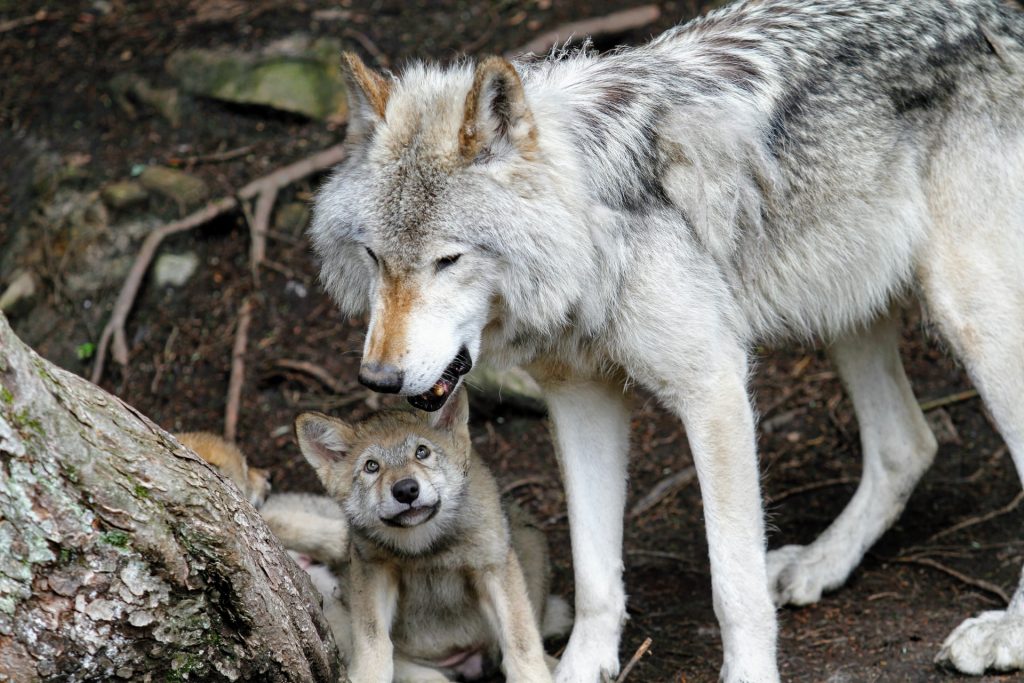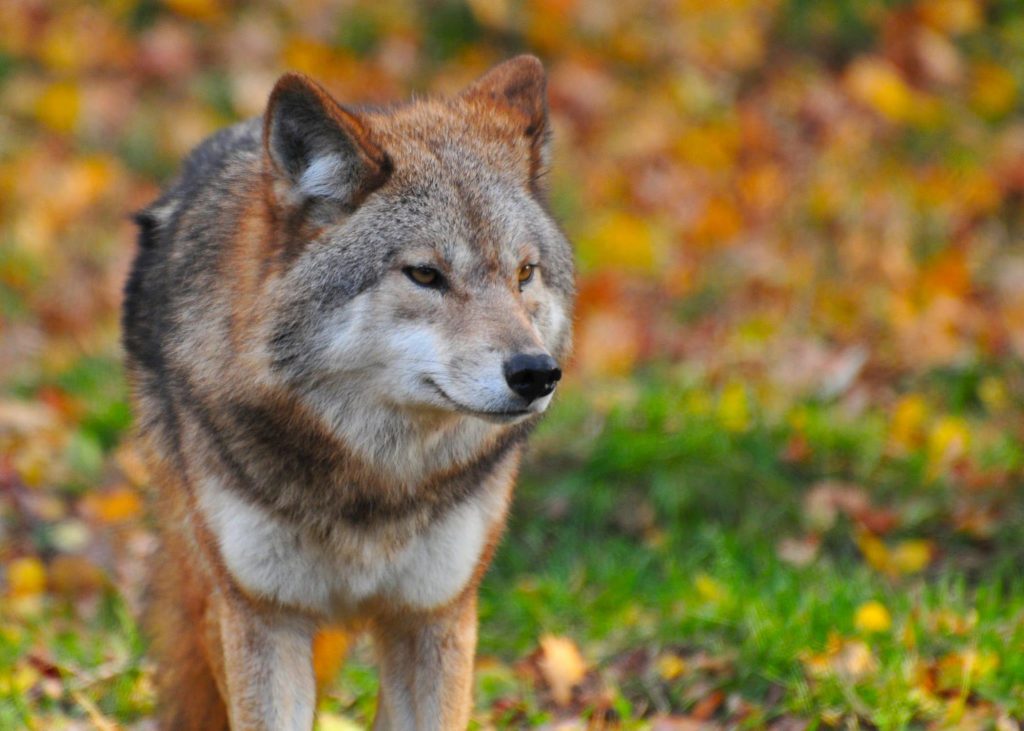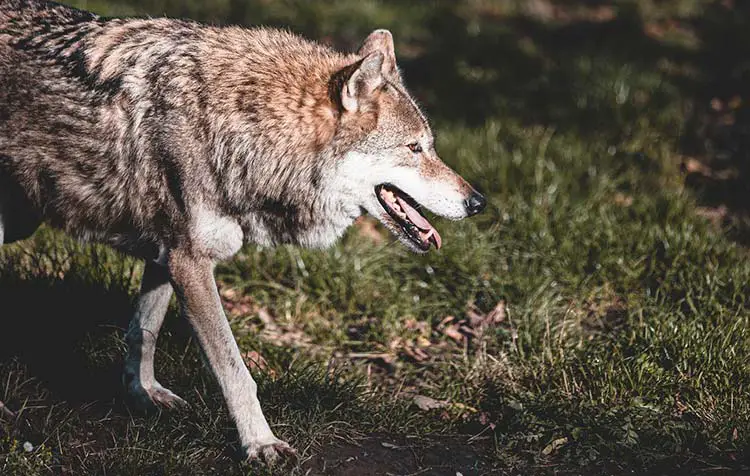Looking for meaningful Wolf statistics? Then you will find it here! Since the year 2000 wolves live again in Germany. A circumstance that polarizes. Many people are happy about the return of the predator during the global species extinction - others again are afraid of the animal or for their own existence. Out of the emotion, it comes in the consequence again and again once to false assertions or errors.
In this article I would like to give you the most important statistics, facts and figures about wolves. From populations, to wolf attacks and deaths - to the acceptance in the population. Let's go!
In advance you can find a short overview of the article here:
My please: If you use any of the Wolf statistics from this article on the Internet or elsewhere, please cite the following source. Thank you very much for your support!
https://www.careelite.de/wolf-statistiken-zahlen-fakten
Statistics on the occurrence of wolves

How many wolves live in our country and elsewhere on earth? First of all, I will present you some general information and wolf statistics about the population and the occurrence in Germany and the world:
- There are about 170,000 free-ranging wolves worldwide today.₁ About 60,000 of them live in North America and about 15,000 in Europe.₂
- In the 2019/2020 monitoring period in Germany 128 Wolf pack recorded. For 2017/2018, 77 packs were noted, and for 2018/2019, 105 packs.₃
- For 2019/2020, the wolf monitoring program also has 35 wolf pairs noted. In the two periods prior to this, 42 (2017/2018 monitoring) and 40 (2018/2019) pairs were still noted.₄
- According to the 2019/2020 monitoring, there are approx. 10 single animals. The number is slightly declining, as 12 lone animals were still counted in 2018/2019. In 2017/2018, however, only 3 "loners" were recorded among the wolves in Germany.₅
- Brandenburg is the federal state with the most wolves, with 47 packs and 10 pairs.₆
- This is followed by Saxony (28 packs/1 pair/0 individuals), Lower Saxony (23/13/0), Saxony-Anhalt (19/2/0) and Mecklenburg-Western Pomerania (8/5/1).₇
- Bavaria is the federal state with the most wolves (3) that are on the move as single animals.₈
Facts and figures on wolf depredations
How many animals have been killed by wolves in Germany? Here you can find meaningful facts and figures on wolf killings:
- The number of wolf-inflicted livestock damage incidents in Germany continues to rise as the population increases. In 2019, for example, there were About 900 wolf attacks, which leads to about 2900 injured or killed farm animals led.₉
- The animals injured or killed by wolf attacks in 2019 were among the following 88.4 percent by sheep or goats6.7 percent of the total was from game reserves and 4.4 percent from cattle and calves.₁₀
- In Germany in 2019 per wolf attack on average 3.6 animals killed.₁₁
Statistics on the attacks of wolves on humans

How often have humans been attacked by wolves? And how high is the probability of being attacked? Also for this I would like to give you some wolf statistics worth knowing on the way:
- For the period 2002-2020, a team led by scientist John D. C. Linnell established 491 wolf attacks worldwide mainly in India, Iran and Turkey - 26 of which were fatal. Entire 78 percent of these attacks were due to rabies.₁₂
- In Europe and North America in the same period, there were 14 attacks of wolves on humans, two of which were fatal in North America.₁₃
- The Probability for a wolf attack, however, is basically so low that it cannot be calculated in a statistically meaningful way.₁₄
How many wolf deaths have there been in Germany?
How many wolves were found dead? And why did the animals die? The Federal Documentation and Advisory Service on the Wolf (DBBW) has detailed statistics on the causes of death of wolves in Germany₁₅ led:
- In 2020, there were in Germany 128 Finds of death of wolves.
- 100 of these wolves were found at Traffic accidents killed
- 8 wolves came through illegal killing to life.
- 10 wolves died one natural death.
- A wolf much the strategic "Wolf Management" victim.
- In 9 deaths, the exact cause of death has (still) remained unclear.
- From 2015 to 2019, the cause distribution looks similar. The most frequent cause of death of wolves is by far traffic accidents.
- Since 2000, a total of 378 wolves have died in traffic in Germany.₁₆
- However, 50 wolves were also killed wantonly and illegally in the same period. Mostly they were shot, but decapitated and deliberately run-over wolves were also found.₁₇
- Brandenburg had the highest number of wolf deaths, with 141 animals killed in traffic and 51 killed illegally.₁₈
How fast do wolves reproduce?
Of course, I would also like to talk about the growth of the wolf population. Especially because many people believe that we will eventually be overrun by wolves:
- Each pack of wolves (8-10 animals) lives in its own territory, whose Size about 150 to 200 square kilometers and is fundamentally dependent on the supply of prey.₁₉
- As pack density increases, natural regulation of wolves (e.g., through territorial fights) will occur, so that the Independently regulate populations of wolves.₂₀
- In recent years, monitoring has shown growth rates of 30 percent of the wolf population registered in Germany, mainly due to the large territories after the opening of the border, which prevented the animals from immigrating until then.₂₁
- Since wolves are a Life expectancy of up to 13 years and had large areas available after the border was opened, the young animals multiplied very quickly.₂₂
- Now that these young animals are at an age where they can be die naturally and the space for new territories is decreasing, the growth rate of the wolf population has already turned out to be significantly lower in the 2019/2020 monitoring - and this is very likely to be the case in the future as well due to the factors mentioned.₂₃
Social acceptance of the wolf in Germany
What do people in Germany think about the wolf? There are also meaningful statistics on this:
- According to a NABU survey Around 77 percent of Germans find it pleasingthat wolves live in Germany again.₂₄
- About 65 percent of German citizens believe that the risks posed by wolves are exaggerated in the media.₂₅
Use statistics about wolves for educational work!
The wolf statistics show it: basically no one has to be "afraid of the bad wolf". We should rather learn to live with him. I hope that I could paint you with the facts and figures a detailed picture about current populations, events and the general opinion about wolves in Germany and the world.
Do you have questions, suggestions or other exciting statistics about wolves that should not be missing here? Then I'm happy as always about your comment!
Be always kind to animals,

PS: Take a look around the statistics blog. There you will also find, for example, the most important Facts and figures about the fur industry.
References:
₁ Saxon State Office for the Environment, Agriculture and Geology: Wolf occurrence in Europe and worldwide, available at https://www.wolf.sachsen.de/wolfe-weltweit-4425.html. [12.08.2021].
₂,₁₂,₁₃ Andreas Dinkelmeyer: Attacks by wolves on humans: An Update for 2002 to 2020 (as of Apr. 20, 2021), available at https://t1p.de/njxt. [12.08.2021].
₃,₄,₅ Statista GmbH: Wolf population in Germany in the monitoring years 2017/18 to 2019/20 (as of November 2020), available at https://t1p.de/mro3. [12.08.2021].
₆,₇,₈,₁₆,₁₇,₁₈,₂₁,₂₃ NABU Deutschland e.V.: News 2020 November New wolf figures published: more wolves, more illegal shooting, available at https://www.nabu.de/news/2020/11/28886.html. [12.08.2021].
₉,₁₀,₁₁ DBBW: Nationwide Loss Statistics, available at https://dbb-wolf.de/wolfsmanagement/herdenschutz/schadensstatistik. [12.08.2021].
₁₄ NABU Deutschland e.V.: New study on wolf attacks, available at https://www.nabu.de/news/2021/04/29806.html. [12.08.2021].
₁₅ DBBW: Totfunde von Wölfen - Statistik der Todesursachen, available at https://www.dbb-wolf.de/totfunde/statistik-der-todesursachen. [12.08.2021].
₁₉,₂₂ https://www.deutschewildtierstiftung.de/wildtiere/wolf
₂₀ https://chwolf.org/assets/documents/presse/2021/MM_CHWOLF_Regulieren-sich-Woelfe-selbst_24-01-2021.pdf
₂₄,₂₅ NABU Deutschland e.V.: High acceptance for wolves in Germany, available at https://www.nabu.de/news/2021/04/29860.html. [12.08.2021].






